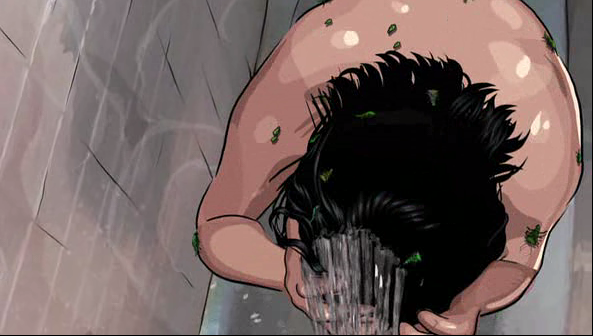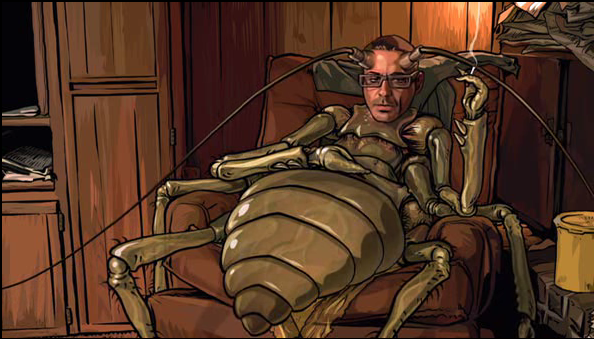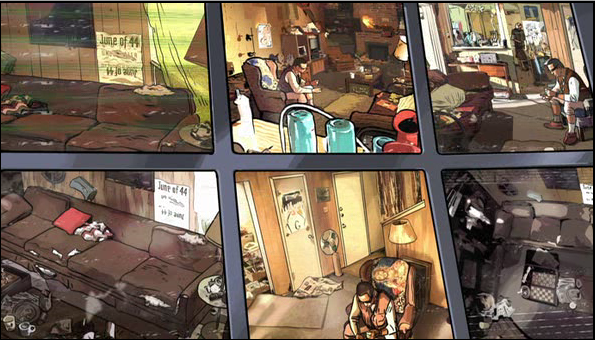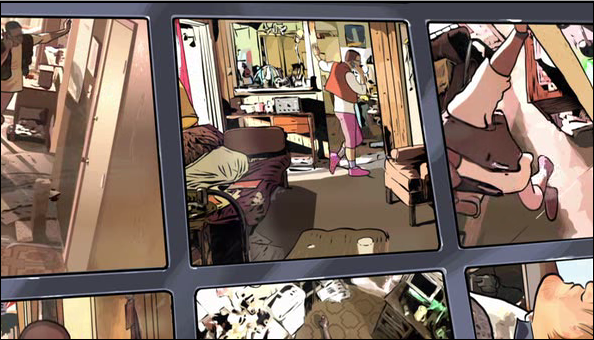Up until comparatively recent times, it used to account for a common assumption among critics that, in order for cinematographic adaptations of a particular literary piece to be considered successful, they must be thoroughly consistent with the original literary work’s discursive aspects. This point of view, however, can no longer be considered as such that represents an undeniable truth-value.
The reason for this is quite apparent – the highly dynamic realities of a post-industrial living bring a new qualitative dimension to even those literary works that were produced as recently, as a few decades ago. What it means is that, as of today, the classical indications of adaptational fidelity have been effectively deprived of their former theoretical legitimacy (Zhang 86).
Nowadays, in order for a particular cinematographic adaptation to be considered successful, it must be thoroughly attuned to the original novel’s spirit, rather than being merely consistent with the novel’s discursively relevant themes and motifs. The validity of this statement can be well illustrated in regards to the 2006 adaptation of Phillip Dick’s novel A Scanner Darkly, by Richard Linklater.
This is because Linklater’s adaptation does not only explore the theme of an identity-loss (which defines the original novel’s discursive significance) in a clearly defined expressionist manner, consistent with the author’s writing style, but it also prompts viewers to assess this theme as such that fully correlates with the discursive realities of a post-industrial living.
In my paper, I will aim to substantiate the legitimacy of this suggestion at length.
When it comes to discussing what can be considered the discursively legitimate indications of the cinematographic adaptation’s fidelity, it represents the matter of a crucial importance to proceed with doing it within the conceptual framework of a circumstantially appropriate theory of adaptation.
Before we do it, however, we would have to gain an in-depth insight into Linklater’s personal view of what account for the indications of an adaptational fidelity and into what prompted him to proceed with ensuring his adaptation’s faithfulness in a manner that has very little to do with Hollywood’s classical cinematographic conventions.
From the available interviews with Linklater, it appears that the foremost reason why he wanted to adapt Dick’s novel, is that he believed that by doing it, he would be able to contribute to the process of more and more Americans becoming aware of the counterproductive essence of contemporary dynamics in the society, “Linklater: It seemed very relevant in the post-9/11 mindset that the ‘war on drugs’ would kind of meld in with the ‘war on terror’ and your personal liberties would kind of go away.
Suspicion would increase – the idea of turning in everybody” (Esther 65). In other words, it is specifically his adaptation’s potential ability to emphasize the acuteness of the original novel’s motifs, in regards to the modern aspects of American living, which Linklater believed would account for the true measure of its contextual faithfulness.
Therefore, it will only be logical, on our part, to go on with advocating the validity of the earlier proposed thesis, within the context of the so-called ‘biological’ theory of adaptation, proposed by Linda Hutcheon – as such, that opposes the rigidness of classic adaptation-related conventions (109).
According to this theory, in full accordance with the Darwinian laws of evolution, the adaptation of literary texts to the newly emerged informational mediums has a strongly defined functional purpose.
This purpose, however, is not being concerned with the assurance of the texts’ survivability per se, but rather with the establishment of objective preconditions for the initially explored ideas/themes to continue appealing to the representatives of next generations. In its turn, this can only be accomplished by the mean of adapting the original themes and motifs to the realities of a currently predominant socio-cultural discourse.
That is, just as the living organisms’ environmental adaptability serves the purpose of preserving the ‘selfish gene’, which defines the quality of their visually observable phenotypes, the literary works’ medium-related adaptability serves the purpose of preserving the actual semiotics, these works convey.
According to Bortolotti and Hutcheon, “Organisms act as vehicles for genes; the literary texts or the stage (cinematographic) performances we call adaptations are the vehicles of narrative ideas – that is, their physical embodiment in some medium” (447).
What it means is that, in order for the film-adaptation of a particular novel to be considered successful, it has to be capable of ensuring a long-term survivability of the contained meme (a literary equivalent of the biological term ‘gene’), regardless of whether the author is being aware of it or not (Dawkins 206).
Yet, just as it is being the case with the replication of genes, the reproduction of memes implies that their phenotypical manifestations must be necessarily adjusted to the surrounding social environment. In other words, it is specifically the discursively relevant cinematographic adaptations of literary texts, which can be defined truly successful.
The watching of Linklater’s film leaves very few doubts, as to the fact that the director did succeed in ensuring the fidelity of the original novel’s memetic aspects.
One of the reasons why it appears to be the case is that, even though that the director had made a deliberate point in altering some dialogues between the featured characters and in adjusting the deployed settings to be more reminiscent of the realities of the 21st century’s living, the main memetic ideas that are being promoted, throughout the film’s entirety, perfectly correlate with that of the original novel.
These ideas can be conceptualized as follows:
- American drug-subculture is embedded in many individuals on a genetic level, which is why there can be no victory in the morality/religion-fueled ‘war on drugs’, by definition.
- The governmental officials that most enthusiastically support an ongoing ‘war on drugs’, are in cahoots with drug-traffickers.
- It is a commonplace practice among police officers to use illegal narcotics on a regular basis.
- The perception of a surrounding reality, on the part of committed drug-addicts, never ceases being thoroughly distorted, which is why these people should not be subjected to any moral judgments.
It is needless to mention, of course, that the majority of psychologically adequate persons would refer to these ideas as being self-evident.
However, in order for the cinematographic representation of the earlier mentioned memetic ideas to be capable of generating a commercial income (this is why movies are being produced, in the first place), it needed to be contextually relevant, so that viewers would be able to relate to the conveyed semiotics emotionally.
This is exactly the reason why Linklater’s adaptation features a number of formal deviations from the original novel, which nevertheless do not undermine the extent of this film’s adaptational fidelity.
For example, there is a memorable scene in the novel, in which the character of Barris reveals the price of his newly purchased sport-bike, “I saw it (bike) in the neighbor’s yard and asked about it and they had four of them so I made an offer of twenty dollars cash and they sold it to me” (Dick 63).
Initially, this scene was meant to promote the idea that drug-addicts are being quite incapable of realizing the moral/legal implications of buying stolen goods. After all, the fact that he was only asked for twenty dollars, in exchange for a brand-new bike, did not alarm Barris even slightly. In Linklater’s adaptation, however, Barris brags about having bought this bike for fifty dollars (00.19.51).
Nevertheless, this formal inconsistency between Linklater’s film and Dick’s novel can be well explained, once we recall the fact that the purchasing power of twenty dollars in 1977 was much higher, as compared to what it is being the case nowadays. Therefore, while striving to protect the fidelity of his cinematographic adaptation, Linklater did not have any other choice but to ‘increase’ the price for the stolen bike by thirty dollars.
In its turn, this allowed him to ensure that the members of contemporary viewing audiences would regard this particular element of the plot’s unraveling thoroughly plausible. Hence, a certain paradox – even though that, in respect of how he went about incorporating the earlier mentioned scene in his movie, Linklater did deviate from the original text, this did not undermine the overall extent of his adaptation’s fidelity.
Quite on the opposite – by ‘increasing’ the price of Barris’s bike, the director was able to increase the extent of film’s discursive soundness – hence, making it more cognitively ‘digestible’.
Nevertheless, the memetic integrity of Linklater’s adaptation is not only being merely maintained by the fact that the director had rightly decided in favor of adjusting the characters’ monologues to be reflective of the realities of a contemporary living in America, but also by his decision to utilize the rotoscoping animation-technique, as a tool for ensuring the film’s expressionist appeal (Ward 60).
There seem to have been a number of rational reasons, which prompted Linklater to proceed with taking advantage of this specific technique.
First, rotoscoping makes possible for the director (which has a limited production-budget) to significantly enhance the background settings and to incorporate the elements of ‘super-naturalness’ into the otherwise conventional plot.
Given the essence of Dick novel’s themes and motifs, Linklater’s decision to use this technique appears thoroughly justified. One of the reasons for this is that, while addressing life’s challenges, many of the novel’s characters never cease being affected by hallucinations:


(Jerry Fabine is trying to wash off (Bob Arctor is perceiving Barris asimaginary bugs in the shower) an insect)
Yet, in order for the on-screen hallucinogenic images to be considered emotionally powerful, they must radiate the spirit of Freudian ‘uncanny’, when viewers are being prompted to explore their own image-related unconscious fears and anxieties. This is where the utilization of rotoscoping comes in particularly handy. As Bouldin pointed out, “The rotoscoped image draws its power from its contagious contact with an original.
Through this ‘material connection’ the rotoscoped animated body is able to conjure the uncanny, supplemental presence of an absent body (13).
There is even more to it – without the deployment of this technique, the director would hardly be able to explore the motif of a ‘scramble-suit’, which does not only reemerge throughout the novel’s entirety, but defines the overall philosophical significance of Dick’s literary masterpiece (Hurwitz 27).
Apparently, by having applied rotoscoping to the live-images, captured with the digital camera, Linklater was able to advance the novel’s original idea that, contrary to the assumption that secret agents’ anonymousness increases their chances to apprehend evildoers, it in fact causes them to adopt the existential mode of those they formally oppose.
The second major motivation behind the deployment of rotoscoping, on Linklater’s part, appears to have been concerned with both: the director’s strive to remain faithful to the original novel and his proper assessment of Dick novel’s clearly expressionist nature. After all, one of this novel’s major characteristics is the lack of a logical/spatial interconnectedness between the featured events.
This could not be otherwise, because Dick had made a deliberate point in narrating his story from the point of view of a person with the history of a long-term drug abuse.
There is, however, even more to it – Dick’s novel does not only reflect the author’s personal disillusionment with the lifestyle of a drug-addict, but also his disillusionment with how the representatives of a ‘moral majority’ in America propose the society’s ‘unproductive elements’ should be dealt with.
Apparently, the absence of a spatial continuity in the original novel signifies Dick’s frustration with the euro-centric idea of a linear progress; as such, that defines the actual meaning of the surrounding reality’s emanations.
What it means is that, in order for the cinematographic adaptation of Dick’s novel to end up thoroughly faithful to the novel’s original spirit, it also had to be shot in the expressionist manner, concerned with the affiliated directors’ strive to help viewers to experience the depicted reality’s subjective aspects (Gianetti 4).
Unfortunately, this could only be accomplished at the expense of undermining the adaptation’s appeal to broader audiences. Yet, being an intellectually honest person, Linklater nevertheless decided in favor of constructing the adapted plot in a manner thoroughly adjusted to the original novel’s clearly defined expressionist spirit of a spatially undermined connectedness between the consequential scenes.
As the director noted, “So much of Hollywood screenwriting and storytelling is all about keeping a highly toned or a sharply structured story. You’re supposed to chip along, one thing into the next, everything important, you know – all that by-the-book storytelling. But I’ve always been allergic to that; especially in a piece like this that’s so fundamentally a character piece” (Johnson 340).
Apparently, it was specifically Linklater’s acute understanding of the discursive significance of the original novel’s expressionist aesthetics, which prompted him to go about ensuring his adaptation’s faithfulness by the mean of exposing viewers to the perceptually subjectualized developments of the plot.
Therefore, there is nothing utterly surprising about the fact that there are a number of unmistakably expressionist editing-related overtones in Linklater’s adaptation.
For example, the actual meaning of conversations that take place between the characters can rarely be grasped outside of what accounts for the film’s overall motif of existential frustration and social alienation. The same can be said about the significance of contextually disconnected images from hidden survey-cameras, to which viewers are being periodically exposed.


These images are supposed to strengthen the sensation of a spatial disorientation, on the part of viewers, so that their psychological state, while at the theater (or in front of a TV-screen), would be more attuned to the theme of identity-loss, explored in the original novel.
A clearly dissonant musical score, used in Linklater’s adaptation, also contributes to the establishment of a proper perceptual mood in viewers rather substantially.
Nevertheless, it is specifically the director’s deployment of the earlier mentioned rotoscoping technique, which contributes to the strengthening of this adaptation’s expressionist overtones more than anything else does – hence, increasing the extent of the concerned cinematographic piece’s fidelity to the original novel.
The reason for this is quite apparent – there is a dreamlike quality to the motioned images on the screen, because they are being continually altered in a barely noticeable, yet persistent manner (Freedman 41).
Finally, Linklater’s utilization of rotoscoping helped to create prerequisites for his adaptation to be fully consistent with the process of Americans growing progressively secularized.
As of late, the pace of this process has gained a particularly powerful momentum, due to the recent discoveries in the field of neurology that remove last remaining doubts, as to the fact that there is no such a thing as ‘soul’, which can exist outside of one’s body.
After all, it nowadays does not represent much of a secret to just about every intellectually advanced individual that the workings of one’s psyche are defined by the essence of chemo-electric reactions inside of his or her brain. For as long as there are no obstacles on the way of chemo-electric reactions’ normal flow, the functioning of people’s consciousness allows them to experience the three-dimensional sensation of ‘self’ (when awake).
However, even a slight mechanical damage to the cortex area of one’s brain can produce a dramatic impact on the sense of his or her self-identity – often without affecting the integrity of the concerned individual’s ability to address cognitive tasks.
Hence, the actual significance of the scene in Linlater’s adaptation, where Bruce (Arctor) realizes that there are tiny blue flowers (the source of substance D) growing amidst corn-plants at the New Path’s agricultural plantation – despite the fact that the institution’s other inmates do not seem to acknowledge these flowers’ presence.
Because it has been mentioned earlier by the film’s secondary characters that, in order to be admitted to the New Path, former drug-addicts are being usually required to undergo a lobotomy (which could have explained their inability to see blue flowers), viewers are left with no choice but to wonder whether, despite Bruce’s newly acquired identity of a ‘human vegetable’, he is in fact continues to act as a police informer.
Simultaneously, this prompts viewers to disregard the metaphysical/religious ideas as to what can be considered the actual roots of one’s consciousness, which in turn makes them more adapted to the highly secularized realities of post-modernity.
The earlier provided line of argumentation, in regards to the discussed subject matter, leaves few doubts as to the fact that Linklater’s adaptation is not being only faithful to the original novel, but also to the currently ongoing process of Westerners getting rid of progress-impending prejudices, in regards to what the representatives of the Homo Sapiens species really are.
Therefore, it will not be much of an exaggeration to suggest that the earlier outlined memetic ideas, contained in Dick’s novel, will indeed be able to survive into the future – hence, guaranteeing a ‘literary immortality’ to the author.
This is because, in full accordance with the provisions of Hutcheon’s theory, Linklater did a perfectly good job, while ensuring the fidelity of his cinematographic adaptation of the original A Scanner Darkly.
Works Cited
A Scanner Darkly. Ex. Prod. Richard Linklater. Burbank, CA.: Warner Independent Films. 2006. DVD.
Bouldin, Joanna. “Cadaver of the Real: Animation: Rotoscoping, and the Politics of the Body.” Animation Journal 12 (2004): 7–31. Print.
Dawkins, Richard. The Selfish Gene, Oxford: Oxford University Press, 1976. Print.
Dick, Philip 1977, A Scanner Darkly. Web.
Esther, John. “The Transparency of Things: An Interview with Richard Linklater.” Cineaste 31.4 (2006): 64-65. Print.
Freedman, Yacov. “Is It Real… or Is It Motion Capture?: The Battle to Redefine Animation in the Age of Digital Performance.” The Velvet Light Trap 69 (2012): 38-49. Print.
Gianetti, Louis. Understanding Movies, 9th ed. Upper Saddle River: Prentice Hall, 2001. Print.
Hurwitz, Matt. “Nothing is Real – Richard Linklater’s A Scanner Darkly.” Videography 31.7 (2006): 22-30. Print.
Hutcheon, Linda & Gary Bortolotti. “On the Origin of Adaptations: Rethinking Fidelity Discourse and ‘Success’ – Biologically.” New Literary History 38.3 (2007): 443-458. Print.
Hutcheon, Linda. “On the Art of Adaptation.” Daedalus 133.2 (2004): 108-111. Print.
Johnson, David. “Directors on Adaptation: A Conversation with Richard Linklater.” Literature Film Quarterly 35.1 (2007): 338-341. Print.
Ward, Paul. “Independent Animation, Rotoshop and Communities of Practice: As Seen Through A Scanner Darkly.” Animation 7.1 (2012): 59-72. Print.
Zhang, Yingjin. “From Shakespeare’s Drama to Early Chinese Cinema: Authority and Authorship in Literary Translation and Film Adaptation.” Yearbook of Comparative and General Literature 54 (2008): 83-102. Print.